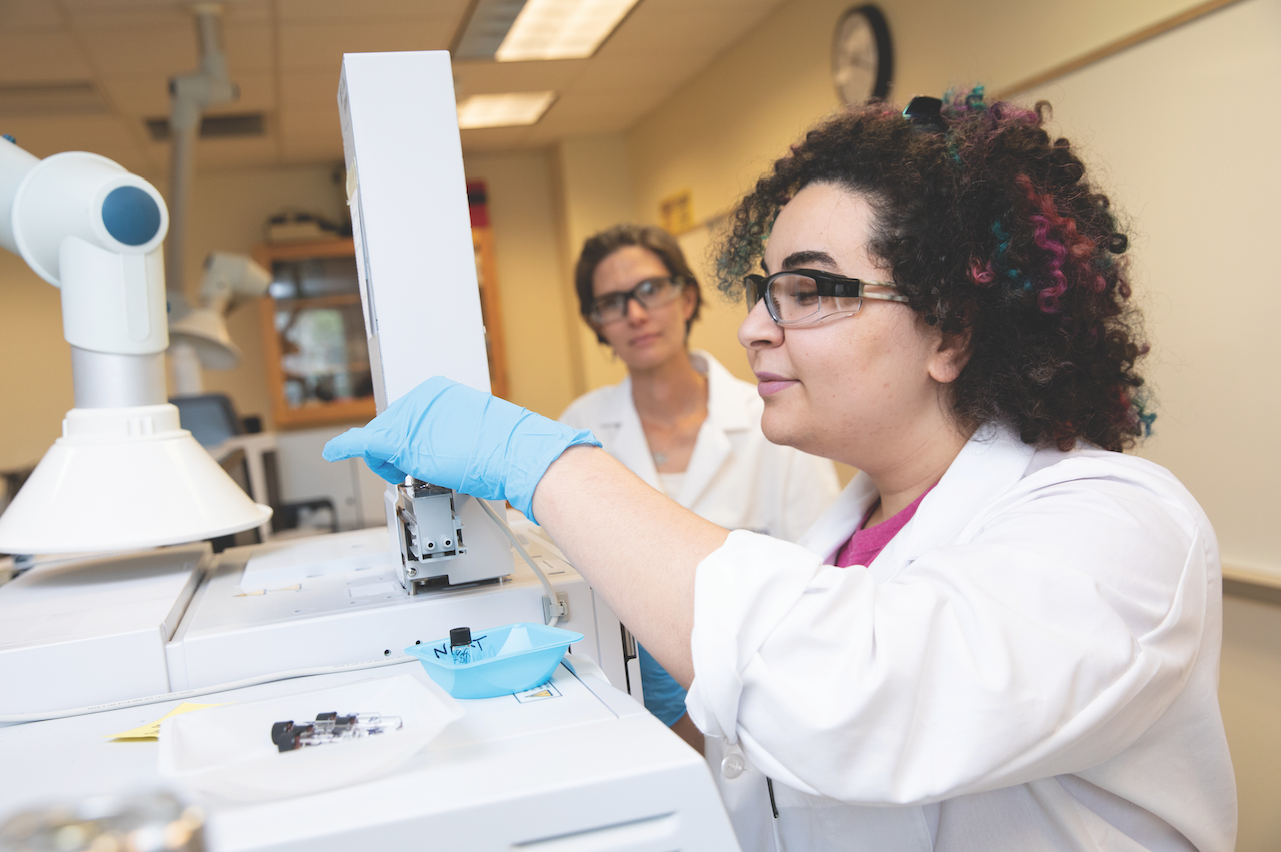Sarah Elsakr’s PRISM project exploring alternative testing methods for use in arson investigations could have been ripped from an episode of the television series ‘CSI: Crime Scene Investigation.’ Elsakr (right) worked with Dr. Sarah Porter on the project.
The lure of the research lab was what one group of Longwood student scientists found irresistible this past summer—not the beach. Working alongside faculty for eight weeks, students selected for Longwood’s PRISM research program explored a variety of topics, including:
- Alternative testing methods for use in arson investigations
- The impact of yeast on brewing a better beer
- A condition known as chemo brain that can affect cancer patients undergoing treatment
- Genetic mutations that have the potential to cause cancer
- Extraordinarily small electronic circuits
Chemistry major Sarah Elsakr’s PRISM project could have been ripped from an episode of the forensic crime drama television series “CSI: Crime Scene Investigation.” Elsakr, a rising senior, worked with Dr. Sarah Porter, associate professor of analytical chemistry, testing burned carpet samples to determine which petroleum product was used as the ignitor.
“Right now, there is one testing method that dominates the field of petroleum analysis. What we are doing is testing and exploring alternatives to the widely used gas chromatographic analyses,” she said. “If there was an arson case, the investigators would collect pieces of carpet or upholstery that they could test and identify if there was an accelerant used and, if so, what type.”
'We are looking at designing single molecules to act like those components we are familiar with … .'
JOSH WALKER ’20
Elsakr and other students selected to participate in PRISM are paid a stipend and receive free room and board while they’re conducting their research, which often has real-world applications.
Brianna LaFratta ’20, a biology major with a minor in neuroscience, spent her summer delving into a condition known as chemo brain— or cancer-related cognitive impairment— which is common in breast cancer patients and the causes of which are not well-understood.
“Symptoms include memory problems, trouble learning new tasks or remembering names, confusion, and difficulty concentrating or multitasking. It is a frustrating and debilitating side effect of cancer treatment,” said LaFratta. “What we are doing relates to neurogenesis, which is the birth of new neuronal cells,” she said, adding that chemotherapy may kill not only actively dividing cancer cells but also these new neurons being formed in the hippocampus of the brain, which is associated with learning and memory.
The research, conducted alongside Dr. Maxwell Hennings, assistant professor of neuropsychology, is looking at the impact on the brain of three different chemotherapy drugs commonly used to treat breast cancer.
Josh Walker ’20, a chemistry major, spent the summer working with Dr. Ben Topham, assistant professor of chemistry, on a long-running project aimed at creating electronic circuits using single molecules in place of regular components like diodes, switches and resistors.
“We are looking at designing single molecules to act like those components we are familiar with, in essence creating extraordinarily small electronic circuits,” said Walker. Their strategy is to research molecules other chemists have designed in order to “enhance them as much as we can to make the best-performing one. We do a lot of brainstorming and testing of different variations. We’ve been able to find some trends that give us a good direction to explore.”



Leave a Comment